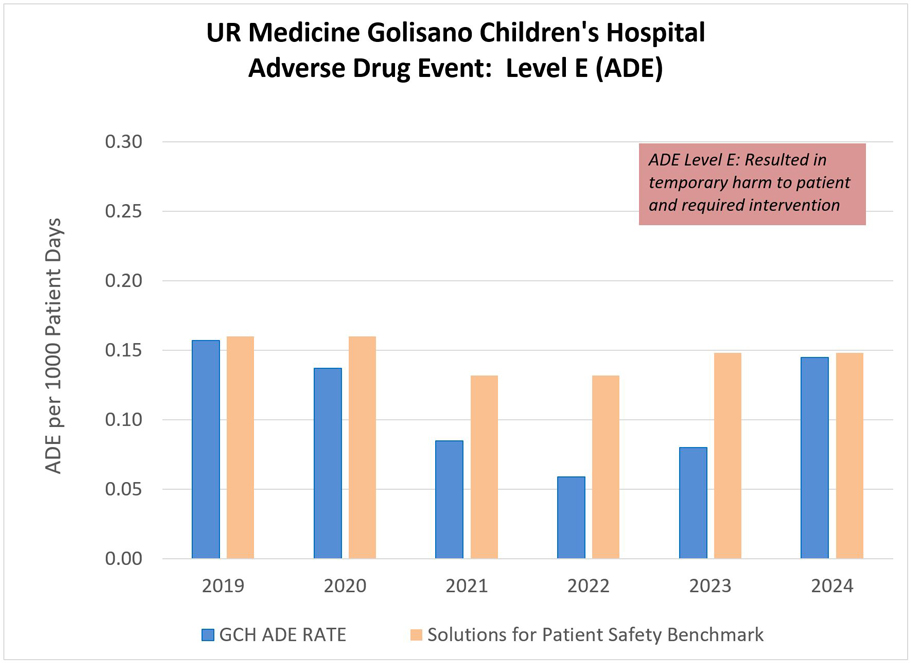Adverse Drug Events (ADE)
Adverse Drug Events (ADE)
Why This Measure is Important
- This measure answers the question: How often is a patient harmed due to failure to obtain, store, prescribe, dispense, administer, or monitor medications as intended?
- ADEs can extend hospital stays, and require treatment or interventions to correct the event. You are key in helping us to know your child while they are in the hospital with us.
What You Can Do
- Ask your doctor and nurses to explain why your child needs the medication and how long your child will have it. If your child is on medications at home and they look different here in the hospital please let us know.
- Ask your child's doctors and nurses what methods they use to make sure your child is getting the correct medication.
- Ask your nurse or doctor if you have any questions or concerns about the medication being given to your child or if you feel that your child missed a dose of medication.
- If you child is on antibiotics please ask which antibiotic and for how long and what number of days is planned for treatment.
How We Measure
- The number of adverse drug events is per 1,000 patient days. Each day your child is in the hospital counts as one patient day.
- Our goal is to maintain adverse drug event rates lower than the national benchmark, ultimately driving towards zero.
What We Are Doing to Improve
- Consistently use a set of best practices, called an “ADE roadmap”, to minimize the risk of these events.
- Use bar code scanning technology for tracking of medication administration.
- Participate in Solutions for Patient Safety, a national improvement collaborative focused on eliminating all patient harm by sharing ideas, data, and best practices among United States children’s hospitals.
- Review monthly, as a team, all cases of ADE to identify opportunities for improvement.
